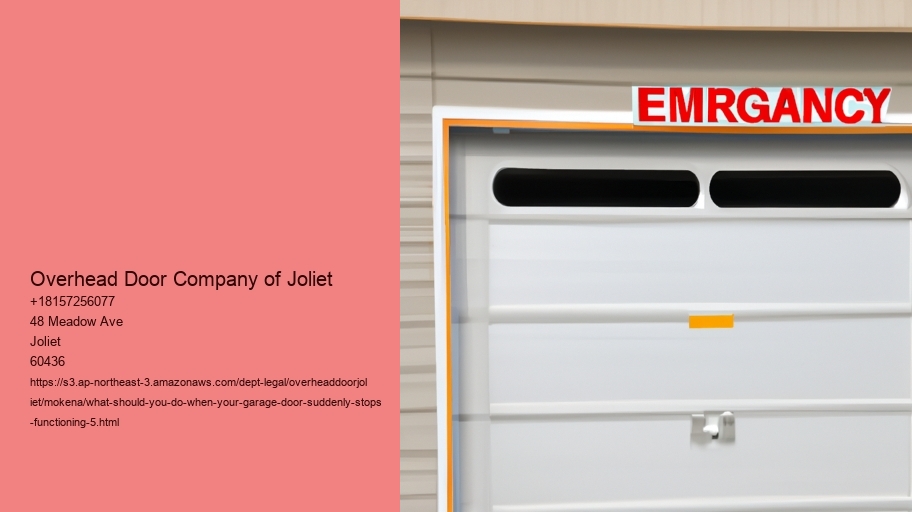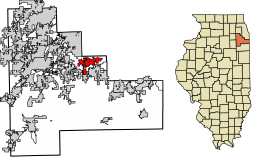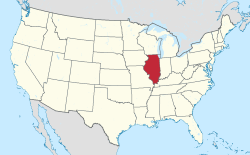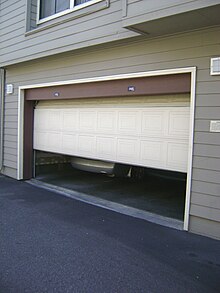Determine the Type of Garage Door and Opener
It is vital to identify the garage opener and door that you have before you start troubleshooting. What is the One Thing You Must Do If Your Garage Door Suddenly Stops Working? .
Roll-up garage doors, which are often used in commercial environments constructed from the slats, which are rolled into a coil.
Tilt-up doors on the other hand, are a single solid piece that can be tilted upwards and outwards as it opens.Belt-drive garage door openers have a lower noise, however, they employ a rubber band instead of a chain. They're a fantastic option for garages with attached garages. Screw-drive garage door openers make use of a rod made of steel for moving the garage door. This is the most effective balance between cost and noise.
After you have identified your garage door and opener type the next step is performing a the basic test for common issues.Ensure that there is power to the opener examining the plug and breaker.Inspect the release cord for manual to be sure that it isn't pulled, which could disconnect the door from the opener.Examine the door's tracks and rollers for any obstructions or damages and remove any obstructions.
If required, lubricate moving parts. A lack of lubrication could cause them to become stuck or become stuck.Resetting your opener will resolve any electronic malfunctions. Check the manual for the model you're using to learn the exact steps. Certain openers can be reset with a push of a button while others require that the unit be unplugged and then re-plugged.
In a few cases it could be more complex such as a broken spring or a motor that is worn out which will require expert assistance.Springs are under significant tension and are dangerous to repair without the proper tools and expertise.
When the garage door stops functioning, it is
Be sure to look for obstructions or debris.
It's not easy and confusing when the garage door stop working abruptly, particularly if you are using it daily.
One of the most important and most useful steps to undertake when faced with this situation is to check for obstructions or debris.This simple yet effective action could be the answer to identifying the issue and restoring functionality to the garage door.A small obstacle could prevent your garage door from working as it should.
Start by inspecting the tracks on both the right and left sides of the door. Examine for obvious obstructions or debris buildup. If you spot anything unusual, such as an acorn, or a rock that is stuck in the track. Take it out with care.
The issue might not be obvious at all times. To check whether the issue remains there, you can run your hands down the track. Also, make sure that the tracks are aligned. This is because misalignment could result in the door jam.After that, examine the hinges and rollers. These parts should be able to move without any resistance. If they're stuck or sticky, this could be due to corrosion or grime. Cleaning and lubricating these parts can typically solve the issue.
It's also vital to look over the space around the door itself.Sometimes items that are stored in the garage could accidentally move or fall, blocking the path of the door.Ensure that the area is free of obstructions and there is nothing blocking the door's movement.
What should you do when your garage door suddenly stops functioning? - elevator
- wall stud
- upselling
- Orland Square Mall
If, even after clearing any obvious obstructions, the door still refuses to work, consider checking the sensors.
Modern garage doors are equipped with security sensors that will stop doors from closing in case something happens to be detected in its path.Make sure these sensors are in good condition and properly aligned, as dirt or misalignment can cause them to malfunction.When confronted with an garage door that suddenly isn't working, looking for obstructions or other debris is a reasonable and often effective first step.It requires minimal tools and knowledge, but it could save you money, time and the hassle of contacting a professional for the most straightforward fix.By making sure that the path is clear and
Examine the wall switch and remote control
If your garage door suddenly stops functioning or is not working, it's an unexpected problem that interrupts your normal routine.In such instances it's normal to experience the need to solve the problem quickly.One of the first and most efficient actions you should take is to examine the remote control as well as the wall switch.
Checking these components can help you avoid costly errors.First, consider the remote control.This handheld device is your primary tool for operating the garage door without direct physical interaction.Over time, remote controls can experience issues such as drained batteries, signal interference, or even internal damage.Start by replacing the batteries with new ones.It might seem simple, but dead batteries are a common reason for a garage door not responding.If the problem persists after replacing the batteries, try reprogramming the remote according to the manufacturer's instructions.Additionally, ensure that the remote is within the recommended range and that there are no obstructions blocking the signal.
Next, you should pay attention to the wall switch, which is another crucial component of the garage door's system.
If you feel comfortable and comfortable, you can open the switch to look for any damaged or broken wires.In some cases, both the wall switch could appear to be working however the door is unresponsive.This could be a sign of a problem in the garage door opener itself or other components such as the sensors or the door tracks.However it is best to start with the remote control and wall switch is an appropriate first step.
It allows you to remove these common issues before proceeding to more complicated troubleshooting strategies.To conclude, checking the wall switch and the remote control when your garage door stops working is a practical and straightforward approach.By addressing these components first, you will be able to quickly determine if the issue lies in these parts that are easily accessible or if further examination is needed.This initial examination will not only help you save time, but also gives you confidence that you've completed the appropriate steps to identify the issue in a timely manner.
Manually test the door balance
It can be frustrating and annoying when the garage door ceases functioning. Garage doors are a vital part of your house, as it is a security feature, a shield from the elements, and easy access to your car as well as storage.
The first step you must do when confronted with the problem of a garage door that is not working is to manually test the door's balance.This simple yet effective procedure will help identify potential problems and avoid further damage to the door or its parts.The stability of a garage door is crucial for its proper functioning.A well-balanced door ensures that the opener won't need to work harder than it needs to, thus reducing the risk of wear and tear on the motor as well as other parts.An imbalanced door, on the other hand could cause more severe issues over time including misalignment, broken springs or a complete system failure.Therefore checking the door's balance is a crucial method of diagnosis that can help determine if your issue is related to the door or the opener mechanism.
Start by disengaging the garage door opener.
Most garage doors feature a release mechanism, often the handle or red cord that lets you disconnect the door from the motor.Once the door is unlocked and lifted manually, you can lift it up to around waist-high, then let it go. it.A well-balanced door will remain in place, or move very slowly.If the door is falling rapidly or shoots upwards this indicates an imbalance.If you notice that your door isn't properly balanced, it is important to resolve the issue promptly.Door balance problems are often related to tension in the springs, which is a risk to adjust on your own because of the tension they're under.It is recommended to seek professional assistance to adjust the springs to ensure that the door is balanced correctly.Doing this not only fixes the immediate issue, but also will increase the longevity and stability of your garage door's mechanism.
The manual testing of the door's balance is an essential first step to take when your garage door stops working suddenly.
If you address issues promptly and understanding the importance to address them quickly, you can ensure your garage door will function seamlessly and safely in future.Tracks and Rollers
When you're faced with a garage door that suddenly refuses to operate, your first reaction is likely to be fear for your life or to think of the most complex technical issues.However usually, the solution is a simple check of the tracks and rollers.This crucial check will reduce time and cost-intensive repair expenses making it the primary factor you must consider in the event that your garage door ceases functioning.
The tracks and rollers in your garage's operation system are critical. The tracks are the metal rails which guide the door as it opens, and the rollers travel along the tracks.
These parts can get worn out, dirty or misaligned over time. This will cause operational problems.Begin by visually inspecting the tracks for obstructions.Dust dirt, grime, and even tiny particles can collect within the tracks, which causes the rollers' to be hampered as they travel through the path.Cleaning the tracks with an damp cloth will often solve these issues.Make sure you dry them thoroughly afterward to stop rust from forming.
The next step is to check the alignment of the track. Tracks must be parallel and perfectly straight. If they appear bent, or not in alignment, then the door could become jammed. It is possible to push the misaligned track back into place using the mallet made of rubber. However, if damage is severe, it's advised to speak with an expert who can realign the tracks properly.
The rollers may wear out with time. This is particularly true when they're made from plastic.
Examine for evidence of wear and tear such as cracks, or chips.If the rollers seem old, consider changing them out with brand new ones.Metal rollers with ball bearings are more likely to provide more durability and smoother operation.Applying silicone-based oils can help lower friction and wear. Make sure to lubricate the hinges as well as the springs to ensure that your garage door functions efficiently.
If you ensure that these parts are well-lubricated and aligned, it is possible to get the garage door back to its fully functioning.
Maintaining and inspecting these components will help prevent any malfunctions from occurring in the future. This will help prolong the life of your garage system.Examine for visible damage or wear
If garage doors stop functioning, it could be both inconvenient and frustrating particularly when you are on your way out or attempting to make sure your home is safe for evening.While there could be many reasons for the malfunction, one of the most practical and immediate actions to take is to check for any visible damage or wear.This initial examination can uncover the cause of the problem, allowing to find a swift and efficient solution.
Garage doors are a complex system comprising rollers, springs tracks, cables, as well as other components. Over time, the components of this system could become worn-out due to constant use and exposure.
You can easily identify obvious flaws by performing a visual inspection.Start by looking at the springs, which are crucial for lifting and lowering of the door.Look for signs of damage, rust or misalignment.A damaged or worn-out spring could render the door inoperable therefore it is imperative to fix the issue promptly.Next take a look at the cables and inspect for damaged or frayed wires that might hinder the door's movement.Similarly check the tracks and rollers for any debris, dents or obstructions that might be hindering the door's path.
The door is a different area that needs the attention of a professional. Be aware of visible warping, dents, or bends.
Ensure that the sensors at the door are cleaned and in good alignment. Uneven or dirty alignment could cause the sensors to fail and stop working.A visual inspection can be beneficial however, you must keep in mind that not all problems are immediately apparent. If you don't notice any obvious indications of damage or wear, it's possible to talk with a technician to diagnose the problem.
This approach will not only assist you in identifying the issue quicker, but allow you to take actions to restore the proper functioning of your garage door.
By being proactive and attentive You can ensure the durability and longevity of the garage door.Check for Springs and Cables
It's frustrating when your garage door ceases functioning. It is important to check the springs and the cables. These parts are essential to the operation of your garage, and are the main culprits for a malfunctioning garage door.
Springs play a crucial part in the operation of the garage door through counterbalancing the door's weight.When the door is in motion the springs take on most of the burden allowing the door to open and close smoothly.There are usually two types of springs, torsion springs and extension springs.Torsion springs are placed over the garage door and twist to store energy. On the other hand, extension springs can be found to either side of the door, and are stretched to give the needed force.
The springs could wear out over time and break, or lose tension, causing operational issues.The same is true for cables as they work in tandem with springs to raise and lower the door.They are typically made from steel and designed to withstand a lot of tension.However cables can suffer due to wear and tear, break, or snap due to the extreme pressure they're under.A broken cable could result in the door becoming unstable or even inoperable.
When assessing the springs and cables, begin by visually looking at them.Look for indications of rust, wear or fraying.If you discover a damaged cable or spring It is important to refrain from using the door until the issue is solved, since pushing it can cause more harm or lead to an accident.If springs appear to be intact but the door is still not functioning, it could be due to them losing tension and need adjustment.
Security is a must when working with garage door parts.
The springs and cables are in tension and can cause serious injuries. If you do not have expertise in garage repair, it's advised to consult a professional.What should you do when your garage door suddenly stops functioning? - Kentucky
- elevator
- International Standard Book Number
- tax
In conclusion, when your garage door suddenly stops working, assessing the springs and cables is a key step in diagnosing the problem.Understanding their role and potential issues can help you determine whether a simple adjustment is needed or if professional intervention is required.Taking prompt action not only restores functionality but also ensures the safety and longevity of your garage door system.
Take a look at calling a professional technician
Your garage door can suddenly stop working and cause you to lose your time. It could expose your home to danger.
While it might be tempting to get your toolbox and attempt DIY fixes, the most prudent option is to think about calling a professional technician.This option not only assures your safety, but also guarantees an efficient and lasting solution to the problem.What should you do when your garage door suddenly stops functioning? - Kentucky
- ceiling
Garage doors are complex systems composed of various components such as springs, cables, tracks, and electronic parts.Each of these elements plays a crucial role in the door's operation, and a malfunction in any part can cause the entire system to fail.Without proper knowledge and experience, attempting to fix these issues can be dangerous.For instance, garage door springs are under high tension and can cause severe injury if handled improperly.Professional technicians are trained to deal with these risks safely, using the right tools and techniques to handle repairs.
A skilled technician also brings a level of know-how and experience which a layperson doesn't have.
They can quickly diagnose the issue and identify whether it's a minor problem, like a misaligned track, or something more serious, like a broken spring.This expertise not only saves you time but also prevents the potential for further damage that can occur with incorrect handling.Professionals also have access to high-quality parts and can ensure that replacements match the specifications of your existing garage door system, leading to better functionality and longevity.A professional technician may save money in the long haul. While an DIY method may appear less expensive initially however, it could lead to larger and more expensive repairs later.
Many technicians also offer warranties on their work that gives you peace of mind knowing that in the event of something going wrong, you are covered.Engaging a professional in the process will help you save time and money. If you are trying to learn the mechanics of garage doors, buy the correct tools and perform a repair could take you many hours or even days. A technician can solve the problem quickly and enable you to go back to your regular routine.
The urge to fix the garage door on your own is powerful. However, calling in a professional is the best, safest and most efficient choice. Their knowledge and access to top-quality replacement parts and their ability to make quick and accurate repairs will ensure that your garage will run smoothly and protecting your home.


















